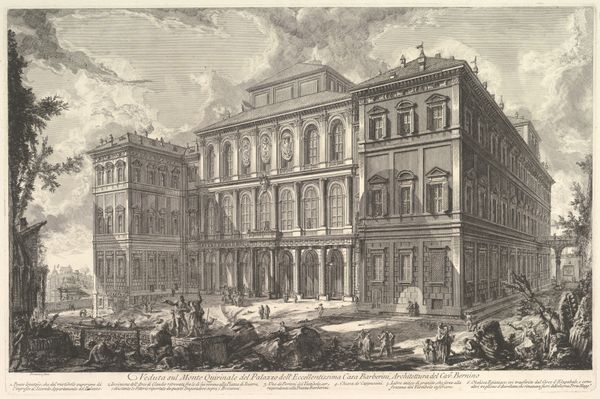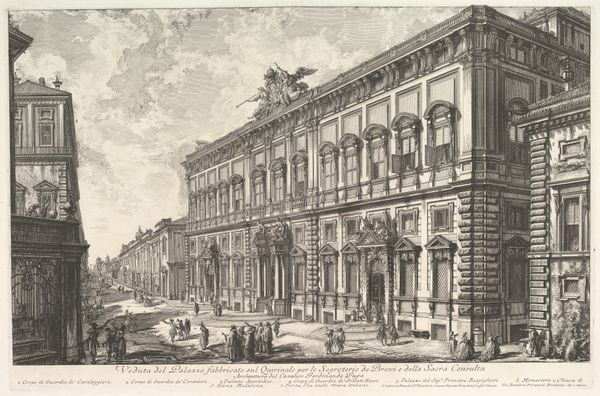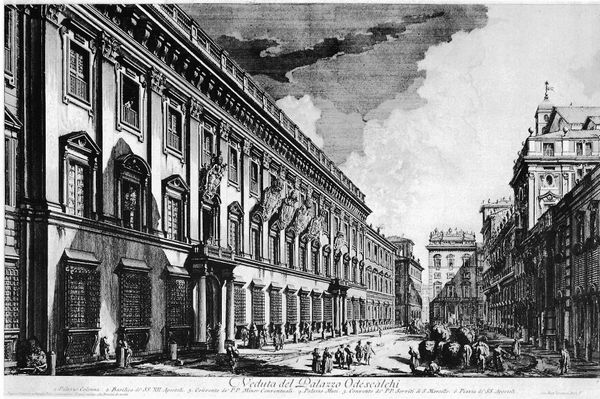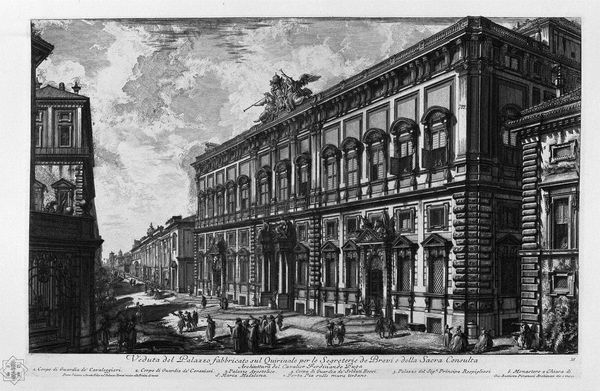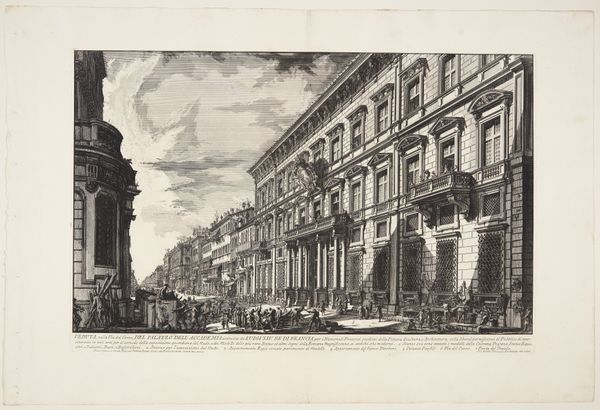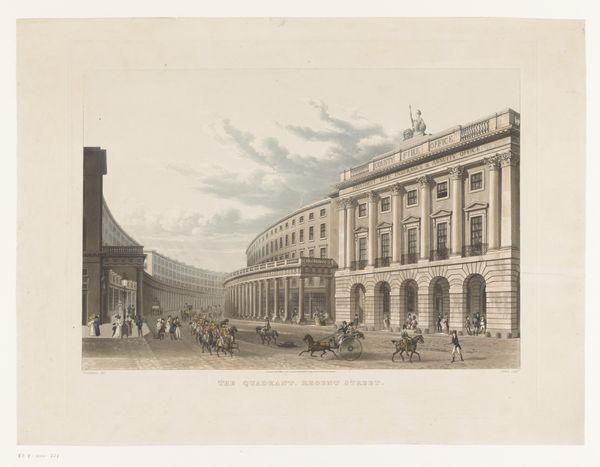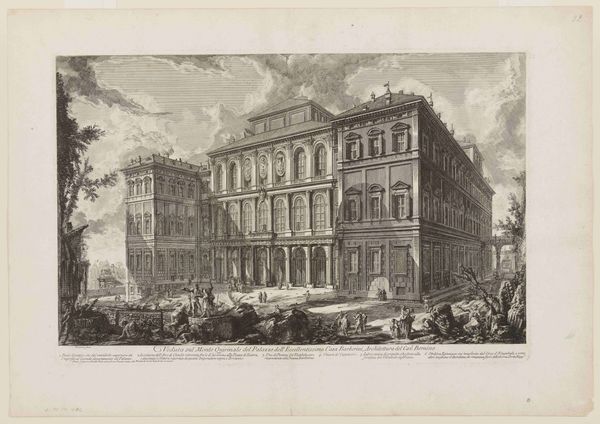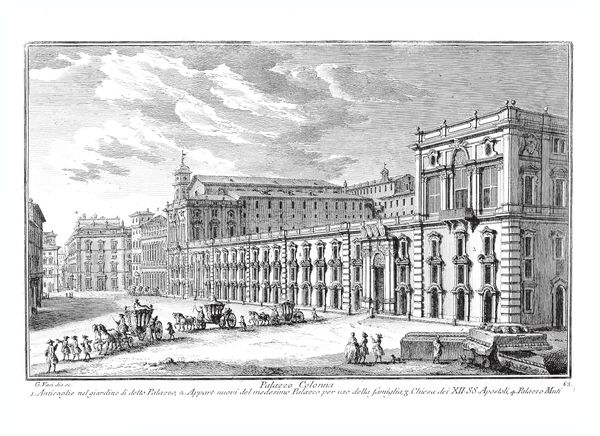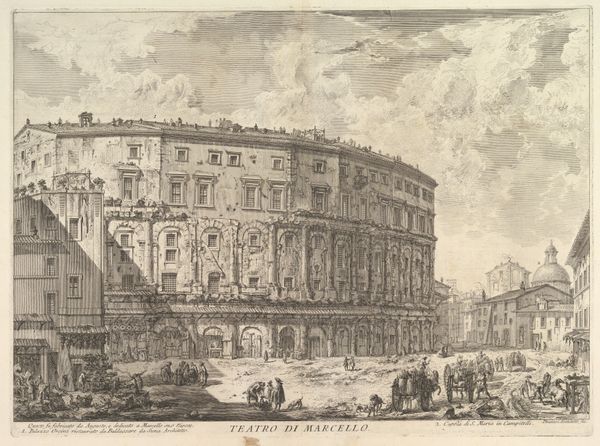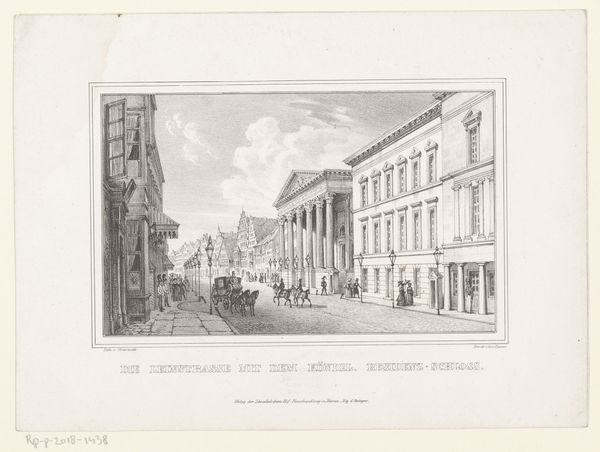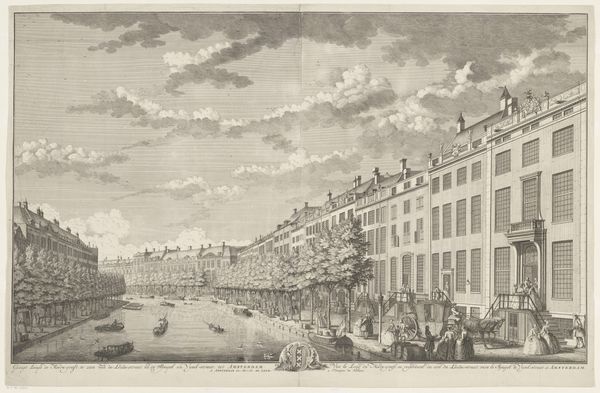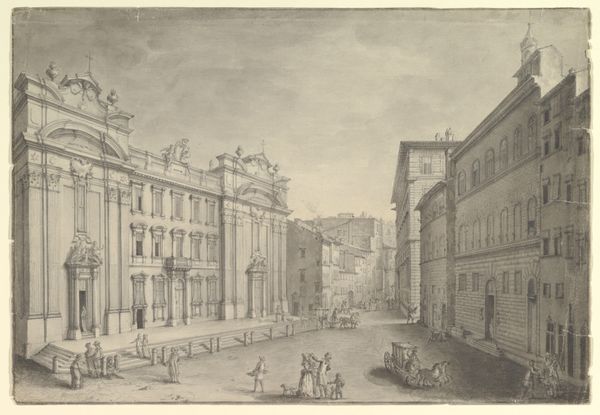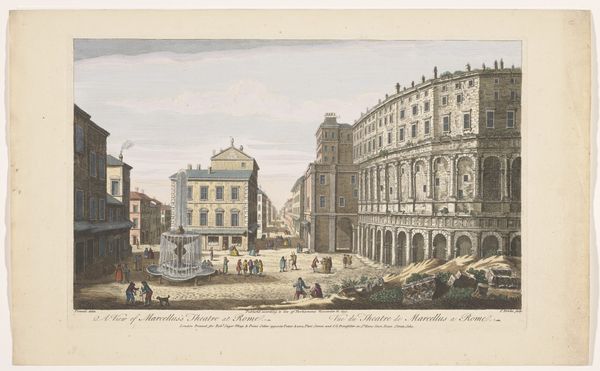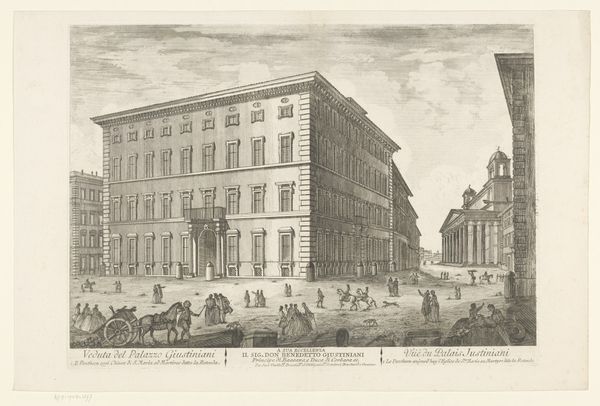
View of the Palazzo Odeschali, from Vedute di Roma (Roman Views) 1748 - 1758
0:00
0:00
drawing, print, etching, architecture
#
drawing
#
baroque
# print
#
etching
#
human-figures
#
cityscape
#
history-painting
#
italian-renaissance
#
architecture
Dimensions: Sheet: 19 5/16 x 27 1/2 in. (49 x 69.8 cm) Plate: 15 15/16 x 24 7/16 in. (40.5 x 62 cm)
Copyright: Public Domain
Curator: This is Giovanni Battista Piranesi's "View of the Palazzo Odescalchi, from Vedute di Roma," an etching dating from between 1748 and 1758. Editor: It’s imposing, even in monochrome. The precision of the lines, the sheer scale of the Palazzo, suggests power, a kind of unassailable dominance. But something feels…staged? Curator: "Vedute," or views, like this were extremely popular, offering Grand Tourists souvenirs of Rome's grandeur. Piranesi, though, wasn't just documenting; he was constructing an image. The Palazzo represents a consolidation of power—the Odescalchi family rose dramatically after Pope Innocent XI, Benedetto Odescalchi. The family's arms are visible on the facade. Editor: Exactly! The strategic positioning emphasizes the established hierarchy. Piranesi, like many artists then, navigated the delicate politics of patronage. There's a commentary here, veiled though it may be, on the architectural manifestations of social inequality and its impact on urban development. It is never a mere recording, but a political inscription in lines, tone and form. Curator: The "stagecraft," as you called it, involves manipulating perspective. He uses deep shadows, almost theatrical lighting, to amplify the monumentality, even though he carefully depicts everyday life through those diminutive figures. What symbolic role could they represent, juxtaposed against the powerful architecture? Editor: Well, the people become part of the tableau—almost props themselves—suggesting how ordinary lives are dwarfed, dictated by these structures. But are they witnesses, participants, or simply absorbed into the system, or all three? Also consider gender: where are women represented here beyond the token figures strolling and standing outside this place of presumed patriarchal authority? Curator: Your read offers insight into enduring symbolic themes related to the relationship of individual identity to place. And despite this being a 'reproducible' medium, an etching, its scale communicates cultural authority of this iconic, almost mythic representation of Rome and class stratification. Editor: It pushes us to consider what it means to monumentalize power and how urban space actively shapes lived experience. Curator: Looking again, I feel this is a space not only shaped but shaped through visual language. Thank you. Editor: Likewise. These buildings don't just stand; they speak.
Comments
No comments
Be the first to comment and join the conversation on the ultimate creative platform.
